Discovering Budapest's Art Scene: Museums, Galleries, and Street Art
Budapest has this amazing art scene that goes way beyond the famous thermal baths and beautiful buildings. We've visited this city many times, and every trip shows us something new about its creative side. The Hungarian capital is basically a huge canvas where old history meets modern ideas.
What's really cool about Budapest is how it mixes Central European traditions with Western influences. This creates art that you won't find anywhere else. And the best part? You don't need to hunt around fancy galleries to see great art. It's everywhere in the city.
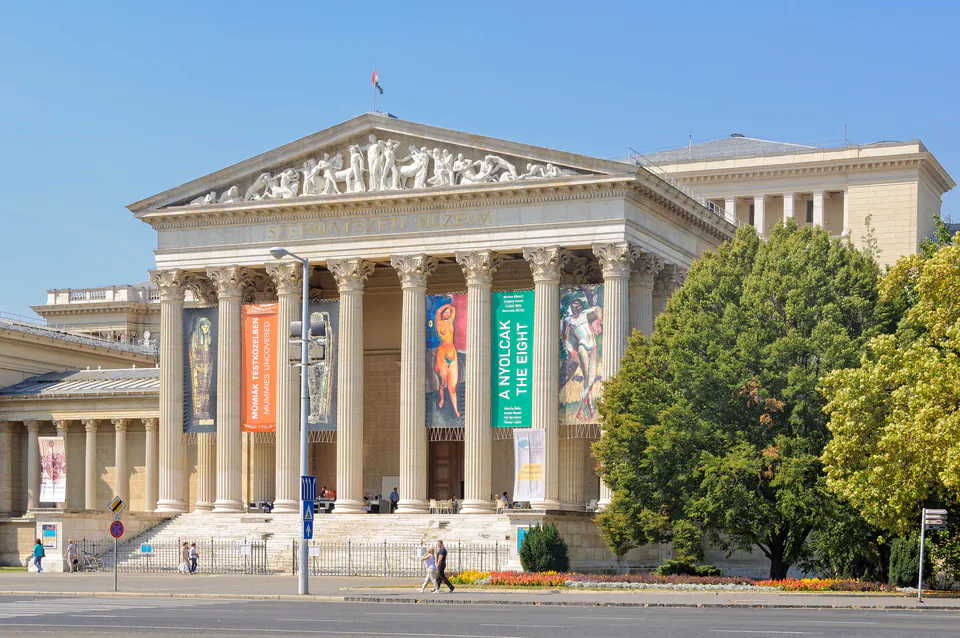
The Big Museums You Can't Miss
Budapest has some world-class museums that are basically windows into different art worlds. Each place has its own personality and shows you art from different times and places.
Hungarian National Gallery
This place sits right inside Buda Castle, and we think it's the best spot to understand Hungarian art. They started the gallery in 1957, and it covers Hungarian art from way back in the 11th century all the way to today.
The location is pretty special. You're inside this UNESCO World Heritage castle that's been through medieval times, Renaissance changes, Baroque makeovers, and lots of rebuilding. So you're getting history lessons just by walking around.
We always tell people to plan at least half a day here. The medieval stone carvings and Gothic wooden sculptures are incredible. But the real showstoppers are the 19th and 20th-century paintings. Mihály Munkácsy's "Christ in front of Pilate" is massive and will stop you in your tracks. Tivadar Kosztka Csontváry's landscapes look like they're from another planet, and József Rippl-Rónai's modern works show how Hungarian artists were keeping up with European trends.
What we love most is that you can see the whole story of Hungarian art in one place. It's like reading a book about the country's creative soul.
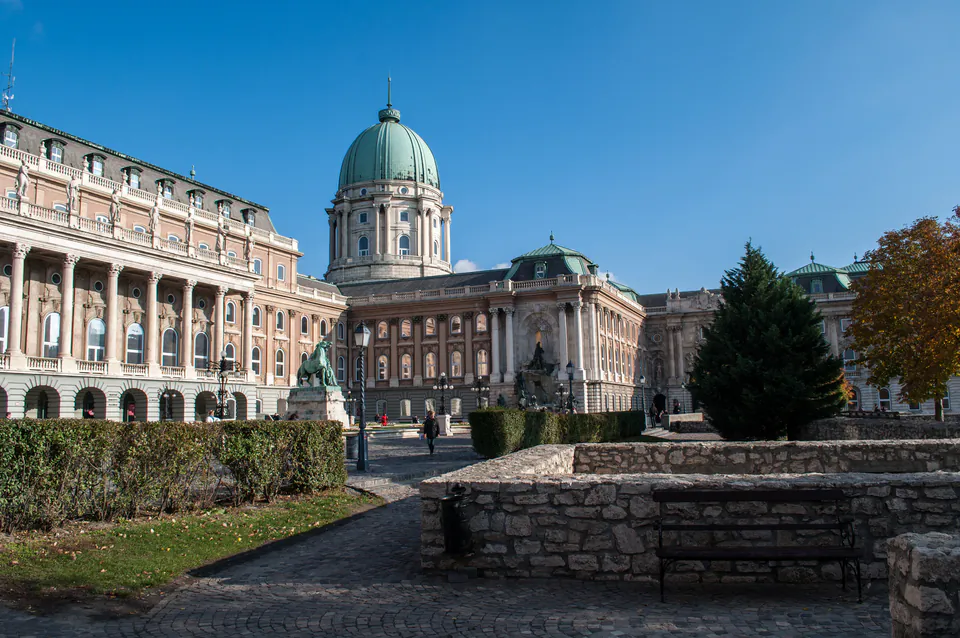
Museum of Fine Arts
They opened this museum in 1906, and it's packed with international art from ancient times up to around 1800. After a huge renovation that finished in 2018, they brought back Hungarian art from before 1800 too. So now you can see Hungarian and international pieces side by side, which was their original idea.
The building itself is pretty impressive. It's right on Heroes' Square with this grand entrance that has eight big columns. Inside, the Romanesque Hall and Renaissance Hall are worth seeing even if you're not into art.
We were blown away when we first saw the Romanesque Hall. They had to close it for almost 70 years after WWII damage, but the restoration work is amazing. The hall has these huge columns and murals showing Hungarian historical figures. It feels like being in a cathedral.
The collections are huge. They have one of Central Europe's biggest Egyptian art collections, plus tons of classical stuff and European paintings. Don't miss Raphael's "Esterhazy Madonna" and works by Rembrandt and Rubens. There's even a small bronze horse statue that might be by Leonardo da Vinci.
Ludwig Museum
This is Budapest's main contemporary art museum, and it's in the Palace of Arts building. What makes it special is how they mix famous American Pop Art with Eastern and Central European contemporary works.
The museum really helps you understand how Hungarian art from the 1960s onwards fits into the bigger international art world. They have pieces by Andy Warhol, Claes Oldenberg, and Robert Rauschenberg next to Eastern European artists you probably haven't heard of but should know about.
We always check what temporary exhibitions they have running. They usually show big international names alongside Hungarian masters. The mix of American Pop Art with challenging contemporary pieces from this part of Europe is something you won't see many other places.
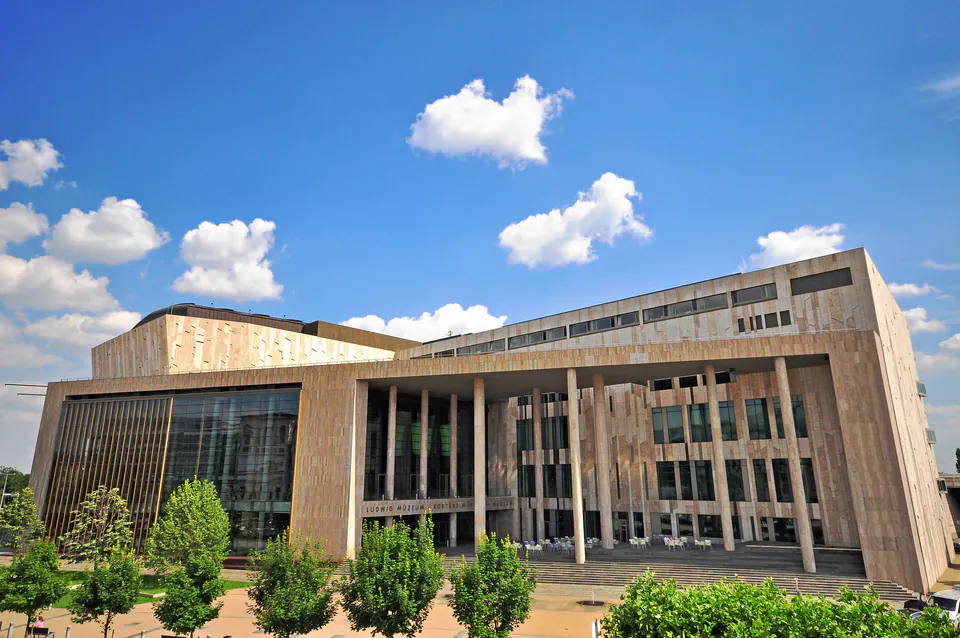
Műcsarnok (Kunsthalle Budapest)
This place works like German art halls. They don't have a permanent collection, just temporary exhibitions of Hungarian and international contemporary art. They've been doing this since 1877, and their current building from 1896 is right across from the Museum of Fine Arts on Heroes' Square.
They put on about 5-6 big exhibitions each year. You might see paintings, sculptures, photography, digital art, or huge installations. The main exhibition hall has this massive skylight that creates dramatic lighting for contemporary pieces.
What's interesting is seeing cutting-edge modern art inside this classical 19th-century building. The contrast creates this cool dialogue between old and new.
Budapest's Top Art Museums
| Museum | Location | Primary Focus | Key Highlight | General Hours | Budapest Card |
|---|---|---|---|---|---|
| Hungarian National Gallery | Buda Castle, District I | Hungarian art from medieval times to present | Munkácsy's Christ in front of Pilate | Tue-Sun, 10:00-18:00 | Free entry |
| Museum of Fine Arts | Heroes' Square, District XIV | International art from antiquity to 1800 | Raphael's Esterhazy Madonna | Tue-Sun, 10:00-18:00 | Free entry |
| Ludwig Museum | Palace of Arts, District IX | Contemporary art, Pop Art, Eastern European | Works by Andy Warhol | Tue-Sun, 10:00-20:00 | Free entry |
| Műcsarnok (Kunsthalle) | Heroes' Square, District XIV | Temporary exhibitions of contemporary art | Varied by exhibition | Tue-Sun, 10:00-18:00 | Free entry |
| Museum of Applied Arts | Üllői út 33-37, District IX | Decorative arts, Art Nouveau | Ödön Lechner's building | CLOSED FOR RENOVATION until 2025 | Free when open |
Smaller Galleries Worth Your Time
Budapest's big museums are great, but the city also has tons of smaller galleries that are often run by private owners. These places give you a more personal experience with both new and established artists. They're especially good for seeing what Central and Eastern European artists are doing right now.
We've found that these contemporary galleries are really important for supporting new artists and connecting Hungarian creators to the international art world. Many galleries specifically try to help local artists get global recognition or bring international trends to Budapest.
One thing that makes gallery hopping easy is that several contemporary galleries are clustered together. You'll find a bunch in Districts VI and VII, around Király utca and Andrássy Avenue, and in the Palace District. We usually spend an afternoon walking between them.
Some galleries we always recommend include Deák Erika Galéria, which focuses on conceptual art, acb Galéria, which represents important Hungarian contemporary artists like Dóra Maurer, Várfok Gallery, one of Budapest's first private contemporary galleries, and INDA Gallery, which shows diverse artistic practices that explore social and political themes.
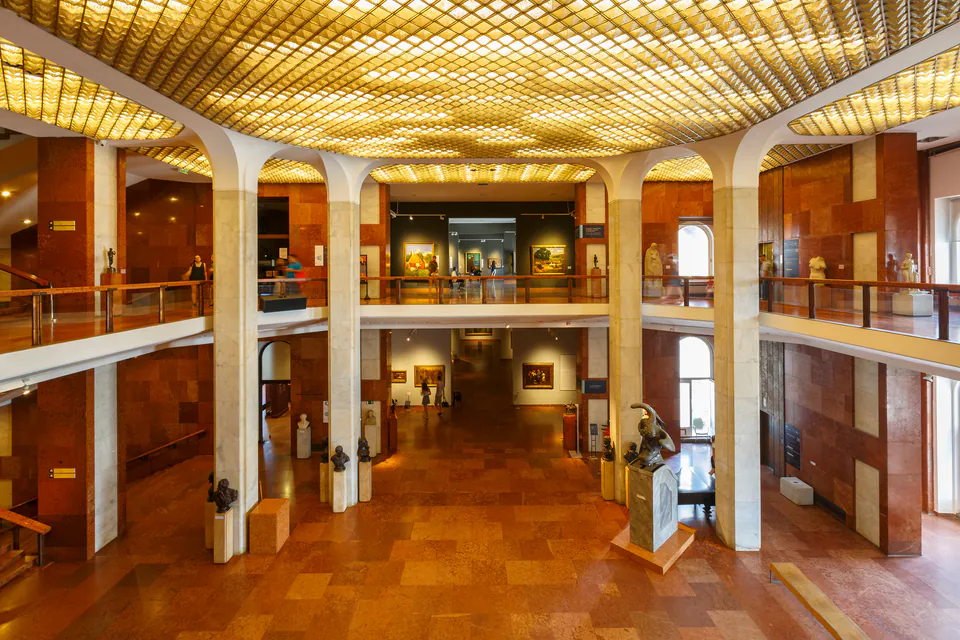
Street Art Everywhere
Budapest's art scene isn't just stuck inside buildings. The city has this amazing street art that's spread all over, especially in the Jewish Quarter. We love how accessible this art is - it's free and you can stumble across it while just walking around.
The street art here often tells stories about Hungarian history and culture. You'll see murals about the Rubik's Cube, Nobel Prize winners, and pop culture mixed with local concerns. It's a great way to see modern artistic expression without paying museum fees.
One group that's been really important is Színes Város (Colorful City). They want to "take art out of galleries and make it accessible to everybody" by painting huge murals on blank building walls. Their colorful projects make the city look better and also highlight social issues.
Our favorite street artist is Mihály Kolodko, who makes these tiny bronze sculptures that pop up all over Budapest. These little "guerilla sculptures" show famous Hungarian people, cartoon characters, or reference historical events. Finding Kolodko's mini-sculptures has become like a treasure hunt that locals and tourists both love.
The Jewish Quarter (District VII) has the best concentration of murals. We always walk around Király utca, Akácfa utca, Dob utca, Kazinczy utca, and Kertész utca to see the latest additions. Look for the "Alice in Wonderland" mural on Kertész utca, the Rubik's Cube mural on Dob utca, and "Beef Encounter" (a Hungarian grey cattle) on Kazinczy utca.
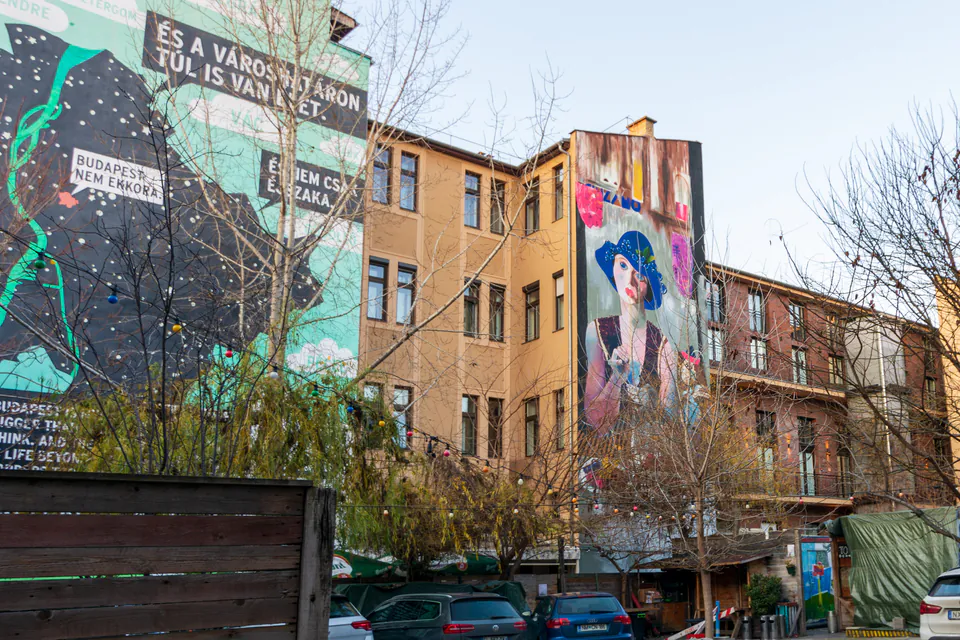
Smart Tips for Art Lovers
Getting around Budapest's art scene is pretty easy if you know a few tricks. The Budapest Card is probably the best thing you can buy if you want to see lots of museums. It's not just a discount card - it actually makes cultural exploration much easier.
We always get the Budapest Card because it gives you free entry to the Hungarian National Gallery, Museum of Fine Arts, Ludwig Museum, and Műcsarnok, plus a bunch of other cultural sites. And you get unlimited public transport, which removes the hassle and cost of getting between museums.
Timing your visit can make a big difference. We prefer the shoulder seasons (April-May and September-November) because the weather's nice and there aren't huge crowds. Winter (November-March) has the fewest tourists but it's cold and gets dark early. If you can time it right, look for special events like "Night of the Museums" in June, where one wristband gets you into tons of museums.
If you want to go deeper than just looking at art, many museums have workshops and special programs. The Museum of Fine Arts has adult courses in drawing, printmaking, and Ancient Egyptian crafts. Most major museums also do expert-led guided tours, but you usually need to book ahead.
We've learned that most Budapest art museums let you take photos without flash for personal use, but they don't allow tripods, monopods, or selfie sticks. You'll probably have to use the cloakroom for big bags, backpacks, umbrellas, and wet coats, but it's usually free.
Budapest's museums are getting much better at accessibility. The Hungarian National Gallery has wheelchair-accessible tours and programs for people with visual or hearing problems. The Museum of Fine Arts is designed to work for wheelchair users, parents with strollers, elderly visitors, and people with various needs.
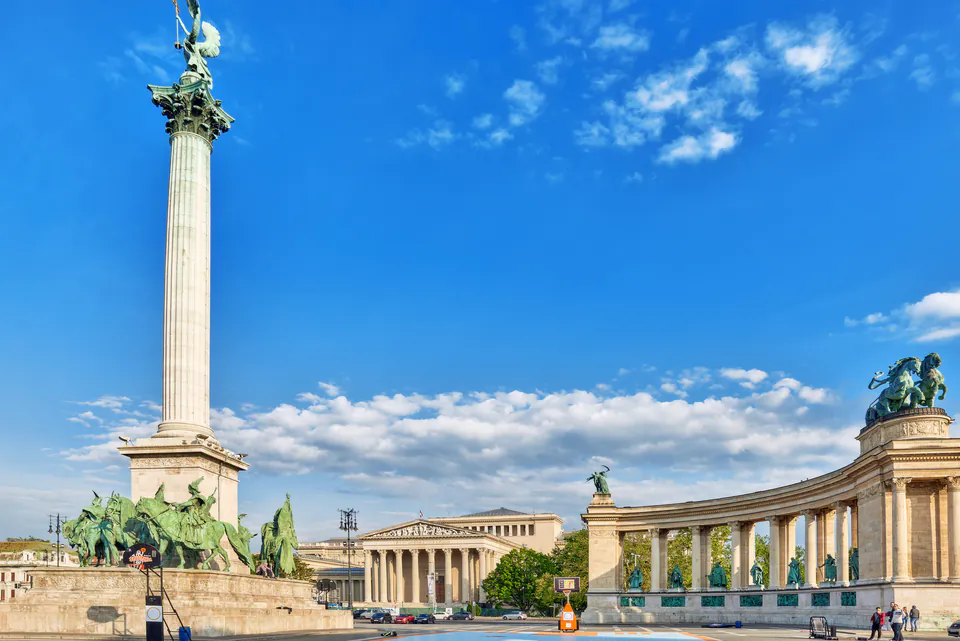
Getting Hungarian Art
To really appreciate what you'll see in Budapest's museums, it helps to understand how Hungarian art developed over time. This artistic story has periods where artists created distinctly Hungarian work, absorbed European trends, and reflected Hungary's complicated history.
Early Hungarian art mixed Magyar traditions with broader European styles. During the Renaissance, Italian artistic influence came through King Matthias Corvinus (1458-1490), whose court became an important humanist center. After the Ottoman occupation, the Habsburgs brought the fancy Baroque style in the late 1600s.
The 1800s were huge for developing a unique Hungarian artistic identity, driven by growing national consciousness. Artists like Mihály Munkácsy became internationally famous for dramatic works like "Christ in front of Pilate."
Maybe the most visually striking movement came around 1900 with Magyar Szecesszió (Hungarian Art Nouveau). This wasn't just about looking pretty - it was a deliberate effort to express unique Hungarian national identity. Architects like Ödön Lechner created a new architectural language that mixed traditional Hungarian folk-art patterns with decorative elements from Eastern cultures.
In the early 1900s, Hungarian artists got really involved with international avant-garde movements. Groups like "The Eight" (Nyolcak) drew inspiration from Cézanne, Fauvism, Cubism, and Expressionism. Even though political problems forced many artists to leave the country, Hungarian contributions to international modernism stayed important. People like László Moholy-Nagy made big contributions to the Bauhaus.
Throughout all these different periods, Hungarian art has consistently reflected the nation's historical journey, fights for independence, cultural conversations with Europe, and ongoing search for identity. This back-and-forth between adopting European styles and consciously creating distinctly Hungarian expressions makes Budapest's art scene particularly interesting for cultural tourists.